In modern football, tactics are ever-evolving, with managers constantly searching for innovative ways to gain an edge over their opponents. One such tactical concept that has stood the test of time and continues to intrigue fans and analysts alike is the “False Nine.” This article explores the key principles and practical applications of the False Nine, along with examples of players and teams who have mastered this intriguing role.
What Is a False Nine?
The False Nine is a tactical role in football where a player nominally deployed as a central striker often drops deep into midfield areas instead of staying high and engaging in traditional striker duties. This movement creates confusion among opposing defenders, as it forces them to decide whether to follow the False Nine into midfield, thereby leaving gaps in the defensive line, or hold their position and risk conceding numerical superiority in midfield.
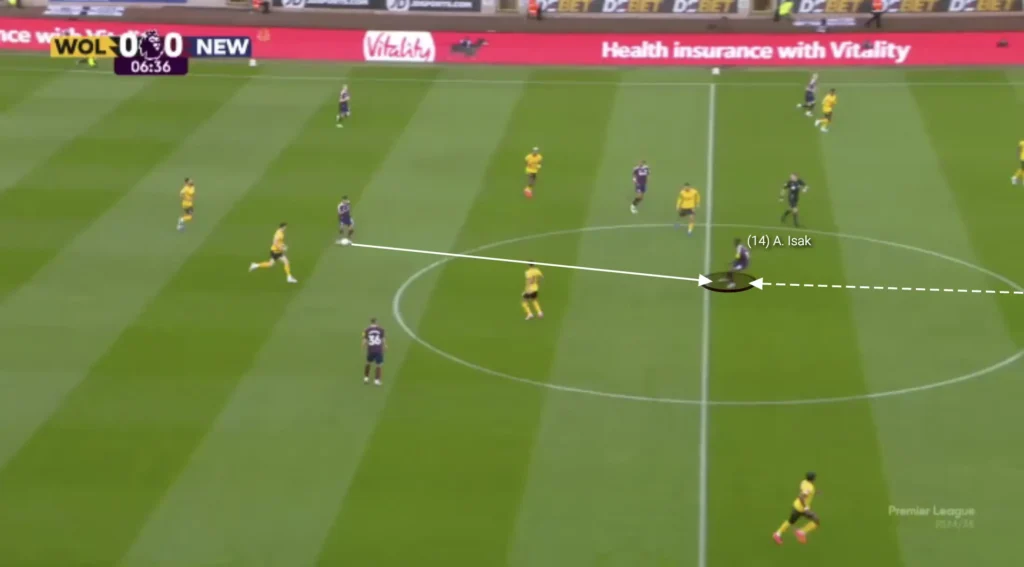
By acting as a bridge between midfield and attack, the False Nine not only disrupts defensive structures but also enhances the team’s ability to retain possession and build attacks. Consequently, this role thrives on intelligent movement and precise coordination with teammates, making it one of the most nuanced and demanding positions in football.
Key Principles of the False Nine
Positional Fluidity
The False Nine must seamlessly transition between the roles of a striker, attacking midfielder, and playmaker. Their ability to move across different zones of the pitch disrupts defensive structures, making it difficult for opponents to maintain their shape. This fluidity also allows the False Nine to exploit spaces between the lines, where they can receive the ball and dictate play.
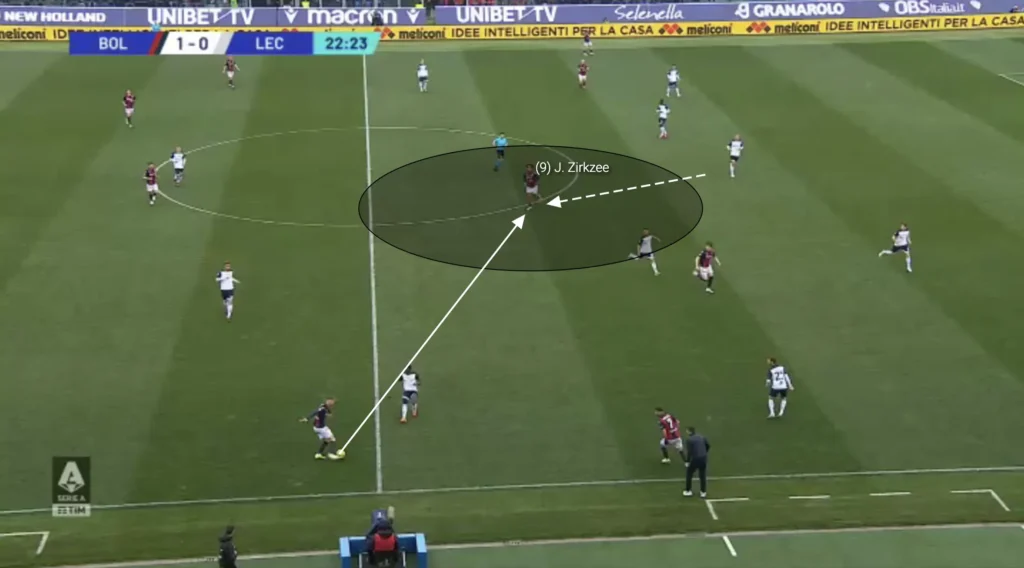
Space Creation
By dropping deep into midfield, the False Nine draws central defenders out of position, creating gaps in the defensive line. This movement not only benefits wingers and attacking midfielders, who can exploit the vacated spaces, but also opens up opportunities for overlapping fullbacks to join the attack. The ability to read and manipulate defensive positioning is crucial for maximizing this principle.
Here, for example, Robert Levandowski drops from his striker position and gets followed by a PSG center-back, which opens the space in behind for an attacking midfielder to exploit.
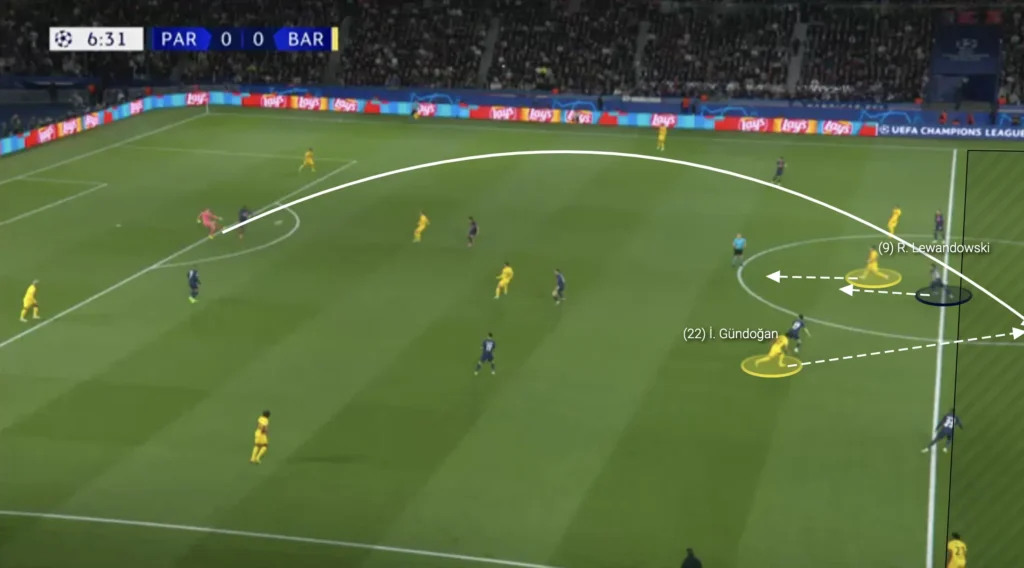
Link-Up Play
Acting as a conduit between the midfield and forward lines, the False Nine must excel at quick, intricate passing and maintaining possession under pressure. Their role involves combining with teammates through one-twos, layoffs, and through balls to create attacking momentum. A successful False Nine often has the technical ability to dictate the pace of the game, ensuring seamless transitions from low build-up to high build-up. They can, for example, be used as a third-man to link play from the backline to a forward-facing midfielder in between the lines.
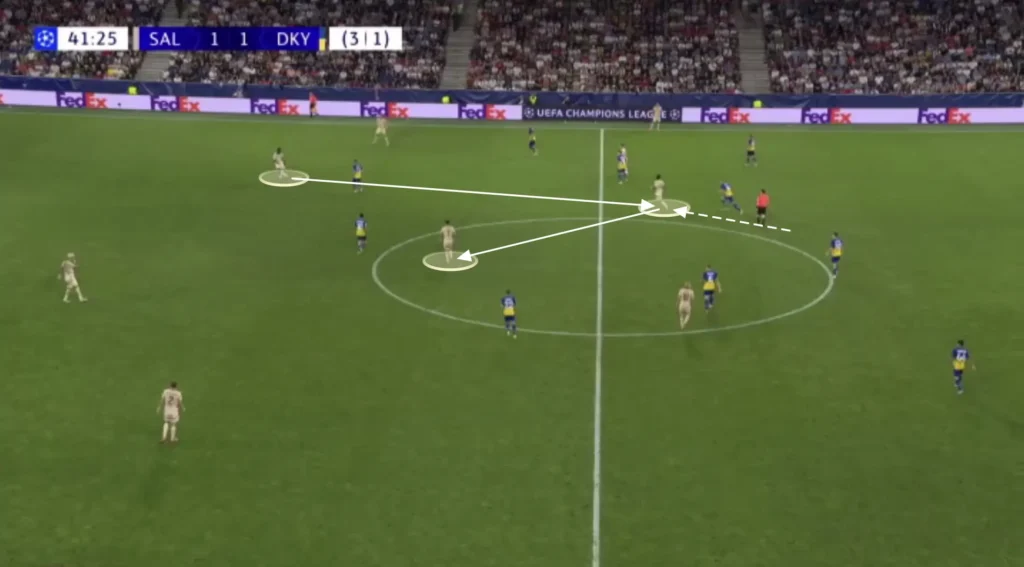
Disrupting Defensive Lines
The unpredictable movement of the False Nine can cause significant confusion among defenders. By alternating between dropping deep, drifting wide, and making sudden forward runs, they keep defenders guessing and create moments of hesitation. This disruption not only benefits the False Nine but also creates opportunities for teammates to exploit unorganized defensive lines. The element of unpredictability is a key component of this role.
Attributes of a Successful False Nine
A player in this role requires a unique and versatile skill set, combining technical ability, vision, and intelligence. Therefore, these attributes are essential for mastering the role:
- Exceptional Ball Control and Dribbling: The False Nine often operates in tight spaces surrounded by defenders and midfielders. As a result, their ability to maintain control under pressure and dribble past opponents is crucial for retaining possession and creating chances.
- Vision and Passing Accuracy: As a playmaker, the False Nine must have an eye for spotting runs and openings in the opposition’s defense. Furthermore, their passing must be precise to link up with teammates and exploit spaces effectively.
- Tactical Awareness and Spatial Intelligence: Understanding when and where to move is a cornerstone of this role. Additionally, the False Nine must read the game and adjust their positioning to manipulate defensive structures, create overloads, or provide an outlet for midfielders.
- Ability to Read the Game and Anticipate Movements: The False Nine’s success relies on their synergy with teammates. For this reason, anticipating runs, movements, and tactical adjustments allows them to maximize their influence on the game.
- Physical Resilience and Stamina: Dropping into midfield and pressing defenders requires a significant physical effort. Hence, the False Nine must have the endurance to maintain a high work rate throughout the game.
- Creativity and Flair: A False Nine often needs to think outside the box to unlock stubborn defenses. For example, moments of brilliance, such as an audacious pass or a perfectly timed dribble, can make all the difference in tight games.
Teams and Players That Defined the Role
Karim Benzema (Real Madrid): A master of intelligent movement and link-up play, Benzema has often dropped deep to create space for teammates and contribute to Real Madrid’s attacking fluidity. His technical skills, vision, and finishing ability have made him a modern exemplar of the False Nine role.
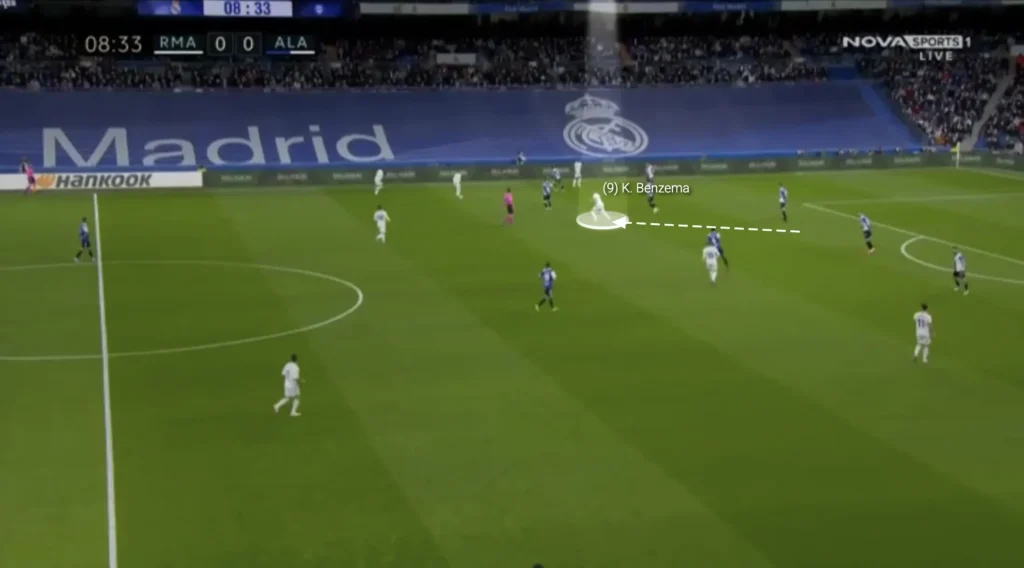
Phil Foden (Manchester City): Under Pep Guardiola, Foden has occasionally been deployed as a False Nine in Manchester City’s fluid attacking system. Foden’s technical ability, agility, and tactical intelligence allow him to excel in this role, creating space for teammates and contributing to City’s dynamic offensive play.
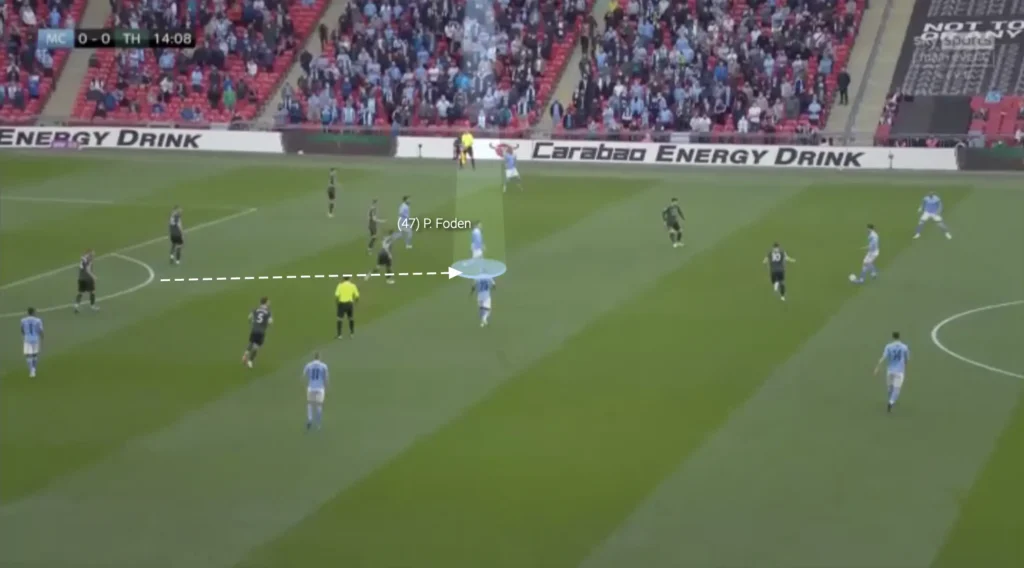
Roberto Firmino (Liverpool): Firmino’s selfless play and ability to drop deep and link up with teammates was integral to Liverpool’s success under Jürgen Klopp. His movement opened space for the Liverpool wingers Sadio Mané and Mohamed Salah, who could attack the space in behind the opposition backline.
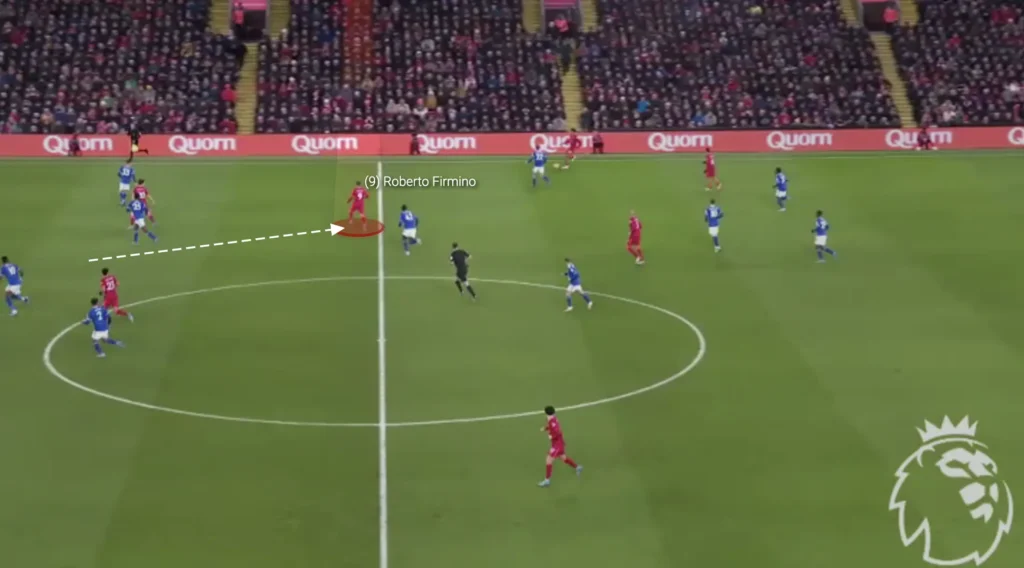
Tactical Considerations
While the False Nine can be a potent weapon, it is not without its challenges. Teams using this tactic must ensure:
- Midfield Dominance: Dropping a striker into midfield requires a high level of technical proficiency and numerical superiority to retain possession and progress the ball. Midfielders must be comfortable receiving and distributing the ball under pressure.
- Dynamic Wide Players: Wingers and attacking midfielders must exploit the spaces created by the False Nine, providing runs in behind to stretch the opposition defense. These runs are vital for maintaining attacking depth.
- Adaptable Defenders: Opponents can counter the False Nine by deploying defenders who are comfortable stepping into midfield to track the deep-lying forward. This requires a high level of tactical discipline and coordination.
- Team Chemistry: The False Nine system relies heavily on coordinated movement and understanding among players. Therefore, miscommunication can lead to a lack of penetration and attacking cohesion.
The False Nine in Modern Football
Today, the False Nine remains a viable tactical option, particularly for teams that emphasize possession and positional play. While its use may not be as prevalent as during Guardiola’s Barcelona era, variations of the role continue to influence modern football. For instance, hybrid roles such as “striker-playmakers” often incorporate elements of the False Nine concept.
Conclusion
The False Nine is a testament to football’s tactical evolution, showcasing the importance of creativity, intelligence, and adaptability. Whether as a disruptive force against rigid defensive lines or a means to enhance midfield dominance, the False Nine remains a fascinating tactical tool. Its legacy is etched into the history of the game, with players and teams continuing to innovate and adapt its principles to suit modern demands.
As football continues to evolve, the False Nine serves as a reminder that tactics are not just about formations but about the interplay of space, movement, and intelligence. Ultimately, it is this dynamic nature that keeps the game endlessly captivating for players, coaches, and fans alike.
